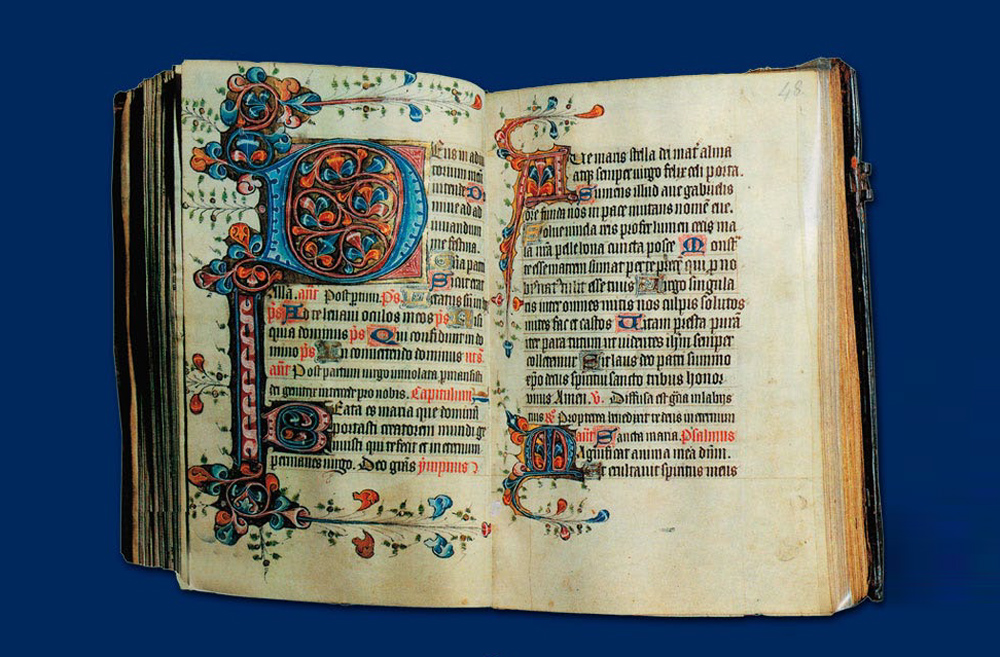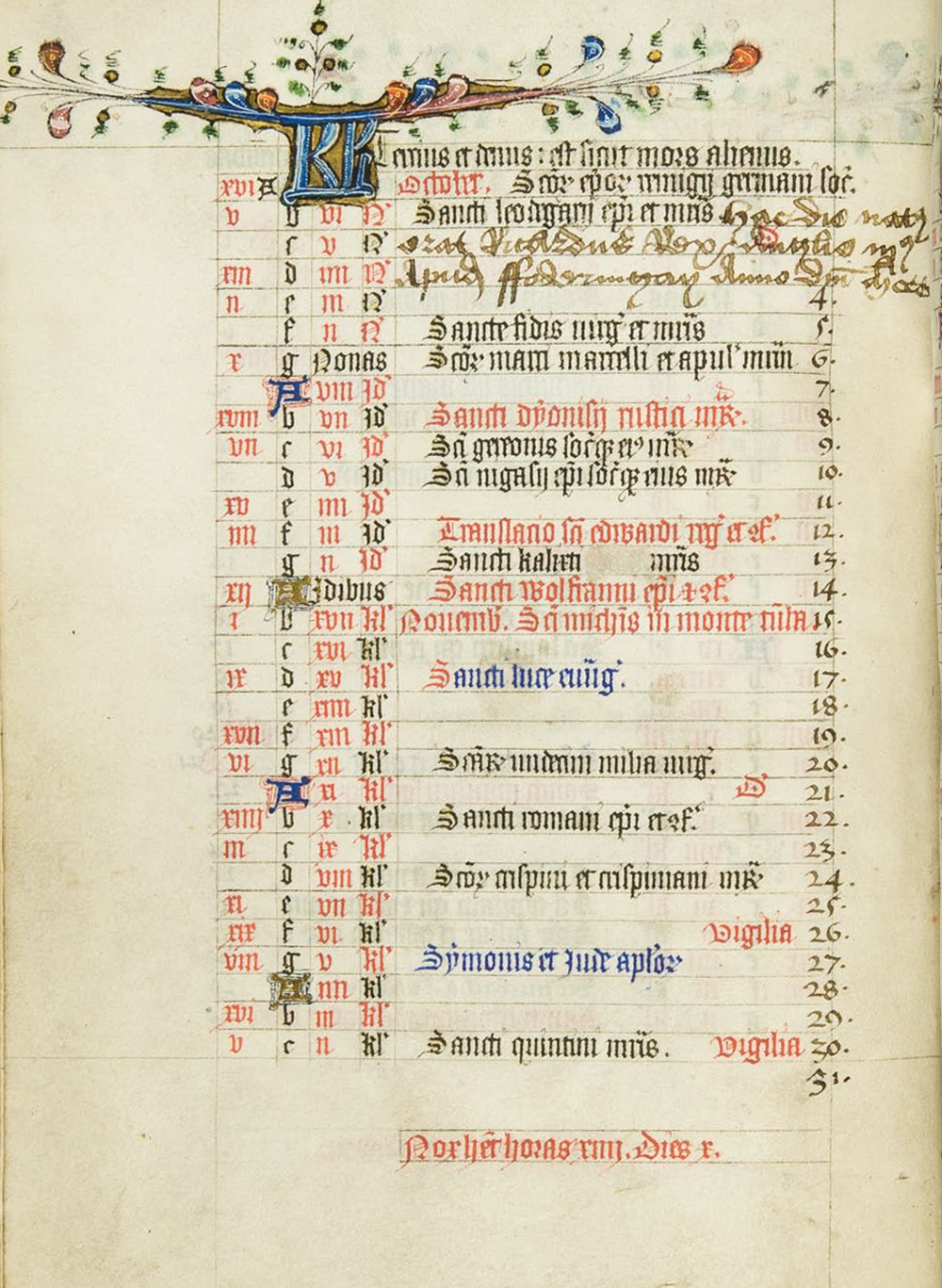Richard III's Prayer Book Goes Online … and Is That a Personal Note?

The personal prayer book of King Richard III — in which the English king likely scrawled a reminder of his birthday in his own hand — is now available to peruse online.
Leicester Cathedral digitized Richard III's "Book of Hours" and published it on the church's website alongside an interactive interpretive text. The original manuscript is in Lambeth Palace Library and is too fragile for public display, according to the dean of Leicester Cathedral, the Very Rev. David Monteith.
Richard III, who died in battle in 1485, was interred in Leicester Cathedral in 2015 after his body was discovered beneath a city council parking lot in Leicester. Born in 1452, Richard ruled England for only about two years. He ascended the throne in 1483 amid a cloud of suspicion: He had been declared regent for his nephew, the son of King Edward IV (Richard's brother). But in the aftermath of Edward IV's death, the old king's marriage was declared invalid and his children illegitimate, which meant the crown became Richard's. His two nephews were never seen publically again, leading to rumors that Richard III had them murdered. The fate of the so-called "Princes in the Tower" remains a mystery to this day. [Photos: In Search of the Grave of King Richard III]
Book of devotion
The mystery of Richard III's nephews, along with Shakespeare's rather unflattering tragedy "Richard III," gave the king something of an unsavory reputation. But he was beloved in his adopted hometown of York during his life, and many modern admirers argue that Shakespeare's portrayal was slander. (The playwright was operating in the era of the Tudors, political enemies of Richard III and his dynasty, and would have had an incentive to paint the defeated king as evil.)
The prayer book shows a softer, devoted side of Richard. Medieval laypeople kept personal books of hours with devotions that they were supposed to perform at certain times of day. Richard's "Book of Hours" was not originally made for him, according to a scholarly text by Anne Sutton and Livia Visser-Fuchs accompanying the Leicester digitization. There were, however, additions likely added at the king's request, as well as one notation that Richard III probably made himself.
The first addition was a prayer called the Collect of St. Ninian, a missionary who converted England's Southern Picts to Christianity. Richard apparently had a special devotion to this saint, as he declared St. Ninian's feast day to be a principal one for his college at Middleham, Sutton and Visser-Fuchs wrote.
Another addition, in the same script, was "The prayer of Richard III," a long devotional that is often mistakenly believed to be written for the king; in fact, Sutton and Visser-Fuchs wrote, it was a common prayer of the time, slightly edited to include Richard's name. After the prayer was a litany, which does appear unique to the king, Sutton and Visser-Fuchs wrote. The litany has not been found elsewhere, they wrote, and features a supplicant asking for God's mercy and protection. Unfortunately, Sutton and Visser-Fuchs wrote, much of the original litany is missing, making it difficult to glean much about Richard III's personal preoccupations from the text. There are references to protection from heathens, they wrote, suggesting Richard III's interest in the Crusades.
Sign up for the Live Science daily newsletter now
Get the world’s most fascinating discoveries delivered straight to your inbox.
King's handwriting

Perhaps the most fascinating page of the Book of Hours for those wanting to know the man behind the monarch is the calendar page for October. Most of the calendar is standard, with lists of saints' days and notations about the length of day and night. There are a few edits, like a note that someone named Thomas Howard died unexpectedly on March 28, and that someone else died on Aug. 25.
On Oct. 2, though, there is a note in handwriting found nowhere else in the book. In a heavy, sprawling hand, the inscription reads, "hac die natus erat Ricardus Rex Anglie tertius Apud Foderingay Anno domini mlccccliio."
Translation? "On this day was born Richard III King of England A.D. 1452." The note must have been written after the king's coronation on July 6, 1483, "and probably by the King himself," Sutton and Visser-Fuchs wrote.
The page with the king's probable handwriting is on sheet 7v of the manuscript and can also be found in Figure 28 of Sutton and Visser-Fuchs' text.
Original article on Live Science.

Stephanie Pappas is a contributing writer for Live Science, covering topics ranging from geoscience to archaeology to the human brain and behavior. She was previously a senior writer for Live Science but is now a freelancer based in Denver, Colorado, and regularly contributes to Scientific American and The Monitor, the monthly magazine of the American Psychological Association. Stephanie received a bachelor's degree in psychology from the University of South Carolina and a graduate certificate in science communication from the University of California, Santa Cruz.
Why is yawning contagious?
Scientific consensus shows race is a human invention, not biological reality










